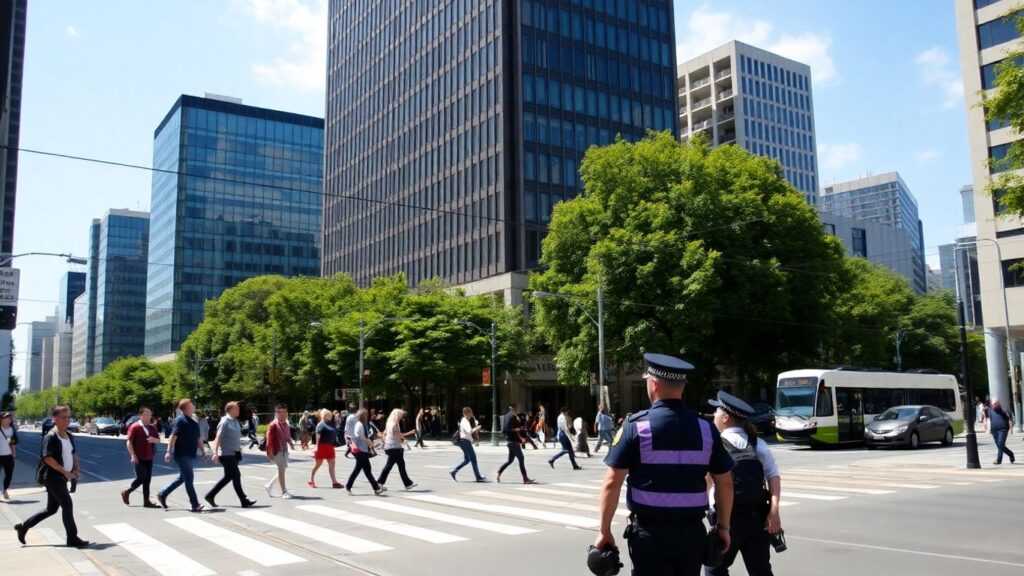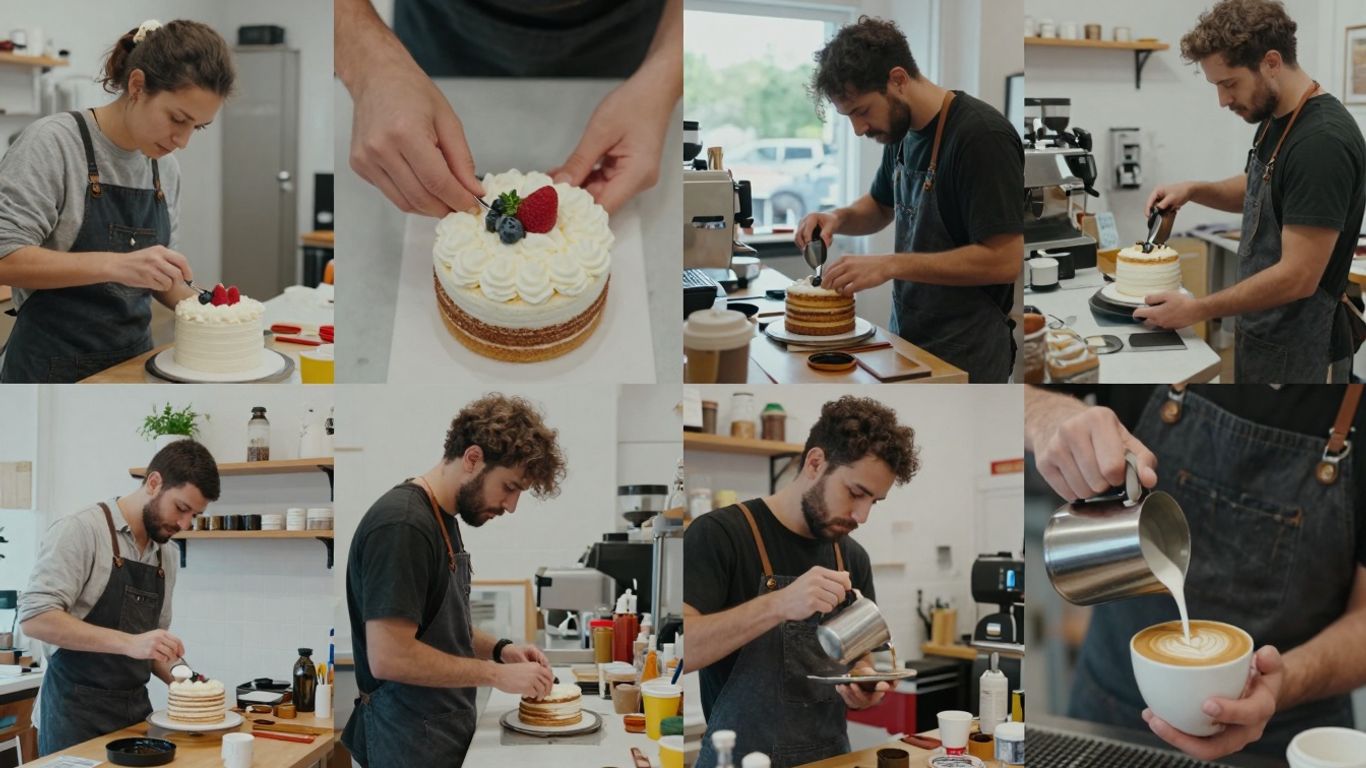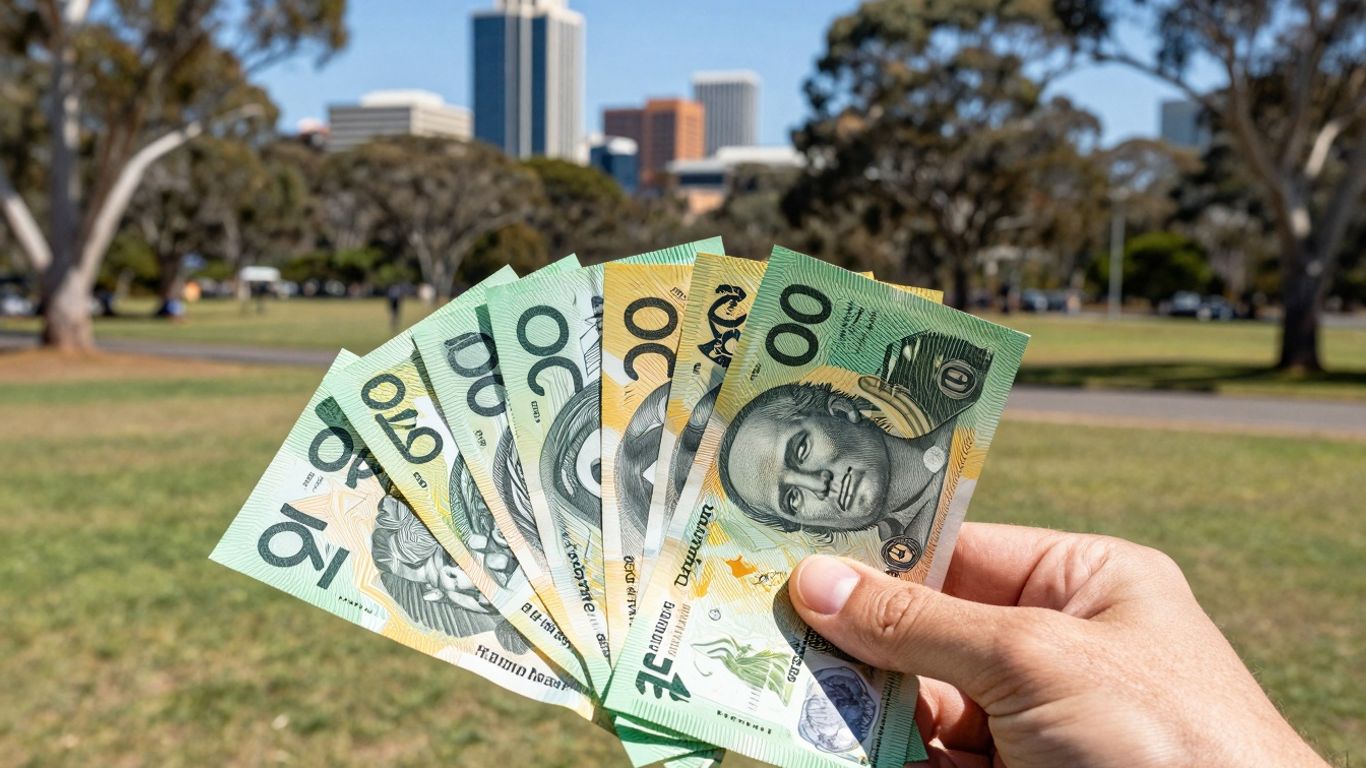Melbourne is a city that buzzes with life, culture, and endless things to do. Whether you’re a local or just visiting for a few days, it’s easy to get caught up in the excitement and forget about safety. But, honestly, keeping a few simple tips in mind can make all the difference. From hopping on a tram to wandering down backstreets or enjoying a day at the beach, being aware of your surroundings and knowing what to look out for helps everyone have a better time. This guide breaks down what you need to know about safety in Melbourne for 2025, with advice that’s straightforward and easy to follow.
Key Takeaways
- Keep your belongings close, especially in busy spots like markets and train stations.
- Stick to well-lit streets at night and avoid wandering alone in unfamiliar areas after dark.
- Use official transport apps or trusted rideshare services when getting around, and always check the driver details before getting in.
- Stay updated on local weather, especially if you’re heading out of town or planning outdoor activities.
- Trust your gut—if something feels off, move on and don’t hesitate to call for help if you need it.
Understanding Personal Security and Safety in Melbourne

Staying safe in Melbourne mostly comes down to common sense. The city has a good reputation, but it’s still a place where crowds, nightlife, and valuables in plain sight can test your luck.
Best Practices for City Safety
- Keep an eye on your things, especially in crowded places like trams or Queen Victoria Market. You might not always see when someone slips their hand into a backpack.
- Avoid walking alone in quiet areas after dark, even in safe-feeling parts of the city. Stick to well-lit streets if you’re out late.
- If something feels off, trust your instincts—circle back or find a group.
- Carry a phone charger or battery pack so you’re not left stranded with a dead phone at night.
- Save Victoria Police and emergency contacts in your phone. You might never need them, but it’s more useful than another silly app.
Staying Safe in Daylight Versus Nighttime
Life changes after sunset. What’s bustling in the morning can feel sketchy late at night, especially around the CBD or some inner suburbs. Here’s how the mood shifts:
| Time | Common Risks | Where to Be Cautious |
|---|---|---|
| Daylight | Pickpocketing, scams | Markets, train stations, busy trams |
| Nighttime | Theft, harassment | Laneways, some CBD blocks, nightlife |
- Stick with friends if you’re heading to clubs or late-night venues.
- Plan your route before heading out and avoid shortcutting through empty lanes.
- Preload your public transport card or use rideshare if you’re unsure about getting home.
Protecting Valuables and Preventing Theft
- Don’t dangle expensive gear (phones, cameras, headphones) in plain view for long stretches.
- Use bags that zip closed or a money belt for cash and cards, especially in crowded spaces.
- Leave your passport locked up at your hotel or accommodation—bring a photocopy instead when exploring.
- ATMs inside busy buildings or banks are safer than quiet ones on empty streets.
If you ever feel out of place, step into a shop or café to regroup. Melbourne is friendly, but it’s always okay to make your own safety a priority.
Navigating Public Transport and Travel Safely
Melbourne’s public transport network reaches all corners of the city, making it easy to see everything from bustling laneways to the edges of suburbia. Whether you live here or are just spending a week, knowing how to move around safely is something that makes day-to-day life easier. In 2025, keeping aware and adjusting to how things might have changed post-COVID or with new infrastructure improvements is key.
Staying Aware on Trains, Trams and Buses
- Buy a Myki card. You’ll need it to ride trains, trams, or buses—you can grab one at most stations or even some convenience stores. Always remember to tap on and off, as ticket checks are routine.
- On trams especially, it’s polite to step outside if you’re blocking passengers getting off. Wait for them, then hop back on. It’s a small thing, but goes a long way in Melbourne.
- Night travel can be a bit quieter and sometimes rowdier. If you feel unsafe, sit near the driver on a bus or by the carriage doors in a train. Most carriages have emergency help buttons—don’t hesitate to use them if you need.
- Peak times mean crowded carriages. Keep your bag in front of you and be aware of your surroundings.
Here’s a simple table to guide average ticket costs and safety tips:
| Ticket Type | Cost (A$) | Peak Safety Suggestion |
|---|---|---|
| Single Trip | $5.50 | Stay alert, mind your belongings |
| Daily Cap | $11.00 | Travel during daylight if new |
| Weekends/Off-Peak | $7.00 | Carriages often less crowded |
Melbourne’s top investment suburbs in 2025 like Tarneit and Clyde North now enjoy some improved links, making even new outer areas much more accessible—check transport links if you’re headed to emerging neighbourhoods.
If you’re ever unsure, don’t stress—locals usually help if asked, and tram and station staff are easy to spot.
Using Rideshares and Taxis Wisely
- Only book via official apps (like Uber, Ola or Shebah), and match the car rego and driver with your phone.
- Sit in the back seat. It’s normal in Melbourne and gives you some personal space.
- Share your ride progress with a friend, especially late. Most rideshare apps make this easy from the booking screen.
- Cashless payment is standard, so don’t get talked into paying with cash, especially late at night.
A few practical tips:
- Confirm the booking code with your driver before getting in.
- If something feels off, cancel and rebook—your safety comes first.
- Avoid getting into pre-hailed cabs if possible; book through a recognised rank or app.
Travel Safety for Day Trips and Excursions
- Plan your trips with weather in mind. Sudden storms or high heat in Victoria can disrupt travel quickly.
- For popular trips—like the Great Ocean Road or Yarra Valley—invest some time in reading recent reviews of tour operators, or ask your hotel desk for brands with good safety reputations.
- Stick with recognised tour providers. This is non-negotiable for regional trips, as proper operators know local dangers and have proper insurance.
- Pack water, sunscreen, and keep your phone charged. Coverage can get spotty outside the city.
- Pay attention to bushfire warnings in summer—destination websites regularly update these, especially for adventures into the Dandenong Ranges or further afield.
Good planning means you spend less time worrying about what could go wrong, and more time actually enjoying the trip.
You don’t need to become paranoid, but a little extra caution makes all the difference in how safe you feel, whether you’re grabbing a tram home or setting off for a full-day trip out of Melbourne.
Staying Safe in Different Melbourne Neighbourhoods
Melbourne is a large, vibrant city with pockets of calm, busy streets, and everything in between. Where you choose to stay or wander will shape your experience — and your feeling of safety.
Choosing Safer Areas to Stay
Some parts of Melbourne are known for their community vibe and low crime stats, making them ideal spots for both newcomers and locals. Here’s a quick look at some options that regularly top the lists for safety:
| Neighbourhood | Why People Choose It | Possible Downsides |
|---|---|---|
| South Yarra | Shopping, cafes, well-lit streets | Can get expensive |
| Fitzroy | Artsy, friendly local spots | Can be noisy |
| Docklands | Modern, good amenities | Limited nightlife |
| St Kilda | Relaxed, near the beach | Busy on weekends |
| Southbank | Museums, safe river walks | Higher rental prices |
Melbourne’s safe family-oriented and student-friendly areas also include up-and-coming secure suburbs for 2025.
Quick tips to pick your area:
- Look for neighbourhoods close to public transport but away from notorious late-night venues.
- Stay somewhere busy and well-lit, especially if arriving late.
- Speak to locals or your host for up-to-date neighbourhood insights.
Neighbourhoods to Exercise Caution In
While the majority of Melbourne feels secure, a few patches deserve more care, particularly after dark. Based on most recent city data:
- Central CBD: Gets busy, but petty theft spikes late at night around some bars and laneways.
- Footscray: Vibrant during the day, but some streets have higher nighttime incidents.
- Outer industrial suburbs: Less street life, can feel a bit isolated after sunset.
Blockquote:
Street smarts go a long way in Melbourne. Trust your gut — if an area feels off, move along or ask a local for the safest direction.
Community Spirit and Local Precautions
Melbourne’s mix of cultures creates a strong sense of local care and support. You’ll find neighbours say hi, people step up to help, and there are loads of community events. Here’s how to tap into this spirit for added safety:
- Join neighbourhood social media groups for local alerts.
- Attend local events or markets — you’ll meet long-time residents who know the area best.
- Ask for directions or advice in small businesses; shop owners are usually clued in on local news and safe shortcuts.
- Stay in well-known, busy areas rather than isolated spots at night.
- Take extra care with your belongings in crowded neighbourhoods, especially during popular events and busy market days.
- Keep emergency numbers saved in your phone, even in the safest suburbs.
Melbourne rewards awareness and a bit of preparation. With the right choices, you’ll find it welcoming and safe for all kinds of adventures.
Dealing With Natural Hazards and Emergency Situations
Living or staying in Melbourne, you won’t face wild extremes, but you shouldn’t ignore the possibility of a surprise from nature. Disasters here are rare, but you don’t want to get caught out by floods, wild weather, or unexpected incidents. Here’s what you actually need to know.
Understanding Local Weather Risks
Melbourne’s weather is a bit unpredictable. One minute it’s sunny, the next it’s blowing a gale or bucketing rain. Bushfires near the outskirts, heavy downpours, or even the odd hailstorm can disrupt plans. The good news? Severe earthquakes, tsunamis, or cyclones basically don’t feature here.
| Hazard Type | Local Risk |
|---|---|
| Earthquake | Very Low |
| Flood | Rare (mostly rural) |
| Bushfire | Possible in outer suburbs |
| Storms | Occasional |
| Drought | Every few years |
- Check local weather updates before heading out.
- If you’re venturing into bushland, keep track of fire advisories, especially in summer.
- In case of heavy rain, avoid creeks and low-lying roads.
Melbourne’s climate rarely lays out big shocks, but the small stuff can still ruin your plans — pay attention to warnings and go with your gut about getting indoors.
Emergency Health Services and Contacts
If there’s a major problem—medical, fire, or police—call 000 immediately. Emergency response is quick, and healthcare is up to scratch for both locals and visitors.
Key Steps During an Emergency:
- Stay calm and move to a safe location if needed.
- Call 000 with details of your situation and exact address.
- Listen to official instructions – don’t rely solely on social media.
Police, ambulance, and fire all respond via 000 — one simple number covers everything in Australia. If you’re not sure, it’s always better to call than risk waiting.
Staying Informed About Natural Disasters
You don’t need to be glued to the news, but knowing where to look matters. Official apps and local radio stations are reliable, especially if power or internet falters. For traffic or road problems after heavy weather, stick with updates about avoiding flooded roads or hazards.
- Use VicEmergency app for real-time alerts.
- Keep a battery-powered radio handy if you’re outside the city.
- Heed local authorities’ warnings—sometimes whole areas can close for safety.
Quick access to updates can save you hassle or even keep you out of trouble. Don’t wait for things to turn ugly to find out what’s happening.
Health and Wellbeing Tips for Residents and Visitors
Melbourne is known for feeling welcoming, but looking after your health is still important whether you’re living here or just stopping by for a while.
Staying Hydrated in Melbourne’s Climate
Even though Melbourne is known for its unpredictable weather, warm spells can hit hard, especially in summer. Dehydration can sneak up quickly, so it pays to stay on top of your water intake.
- Always have a refillable water bottle—tap water here is clean and safe to drink.
- If you’re out and about, particularly on hot days, sip water frequently, even if you don’t feel thirsty.
- Take extra care if you’re exploring outdoors or being active; the breeze can mask how much you’re sweating.
On my first February here, I thought I could handle the heat like a local. Two hours at a park and I had a bit of a headache—turns out, that’s the classic sign I’d forgotten to drink enough.
Sun Protection and Outdoor Safety
You might notice the Aussie sun feels much stronger than you’d expect. It’s not just a myth; UV levels can get pretty extreme, even when it’s overcast. Here’s how to keep yourself protected:
- Wear sunscreen with an SPF of at least 30, and reapply as directed, especially after swimming or sweating.
- Slip on lightweight, long-sleeved clothing, slap on a hat, and slide on a pair of sunglasses with UV protection.
- Try to schedule outdoor activities earlier in the morning or in the late afternoon when the sun isn’t as fierce.
If you’re not used to the climate here, you’ll probably notice your skin burning faster than back home.
| Common Sun-Related Risks | What to Do |
|---|---|
| Sunburn | Use sunscreen, wear a hat |
| Heat exhaustion | Rest in shade, hydrate |
| Dehydration | Drink water regularly |
Accessing Healthcare and Medical Assistance
Melbourne is equipped with great medical services for everyone, residents and visitors alike. Knowing the basics goes a long way if something happens unexpectedly:
- In a medical emergency, dial 000 for ambulance, fire, or police.
- Major hospitals and urgent care clinics are easy to reach in the city centre and most suburbs.
- Pharmacies are widespread and open late in many places, which is handy for minor illnesses or injuries.
- It’s best to have travel or health insurance sorted before your trip. You definitely don’t want to deal with paperwork or big bills if you can avoid it.
- For mental health—or if you just want a chat about wellbeing—there are plenty of local resources and support networks available. See more details and info on available mental health services and government support in Melbourne.
Hospitals here are modern and staff are friendly, but having your Medicare (for residents) or private insurance details ready makes the whole process smoother.
Road and Pedestrian Safety Across the City
Melbourne’s roads are busy, with trams weaving through traffic, cyclists zipping past, and plenty of pedestrians at every corner. Whether you’re driving or walking, being street smart in this city makes a huge difference. There’s a knack to crossing tram tracks, using crossings, and threading your way through crowded footpaths – but once you get the hang of it, it’s second nature.
Road Rules and Tram Awareness
If you’ve never encountered a tram system before, it’s easy to get thrown off. In Melbourne:
- Drivers must stop when trams are stationary at designated stops – look for flashing lights or doors opening.
- Always keep left while driving and watch blind spots; cars drive on the left in Australia.
- Never walk in front of a stopped tram – pedestrians can appear suddenly, and trams are heavy, so stopping takes a while.
- Motorists should do the famous "hook turn" at certain city intersections, which means turning right from the left lane, letting trams go first.
| Road Safety Rule | Applies To | Key Reminder |
|---|---|---|
| Stop for stationary tram | Drivers | Wait for passengers to clear |
| Hook turn at intersections | Drivers | Watch for special signs |
| Always use crossings | Pedestrians | Trams often don’t sound horns |
| Give way to trams | All road users | Trams have right of way |
It’s normal to feel a bit overwhelmed by all the tram bells and honking the first few days, but just be patient. Locals are used to newcomers hesitating at crossings and will often lend a hand or explain a rule if needed.
Safe Driving and Hiring Vehicles
Thinking of renting a car? Melbourne’s roads are in good condition with visible signs but take these steps:
- Double check vehicle controls: Steering wheel’s on the right, indicators are swapped compared to American or European cars.
- Plan your route – some motorways require toll payment. Set up a toll arrangement or check with the rental company.
- Watch speed limits; they change often, especially near schools or in the central city (usually 40 km/h).
- Be extra alert for cyclists in the inner suburbs, and always check your blind spot before turning or opening your door.
Remember, parking rules can be strict – pay attention to signs or you’ll risk a hefty fine (nobody enjoys a ticket on holiday!).
Pedestrian Safety in Busy Areas
Melbourne is a walkable city, especially around the CBD, Fitzroy, Carlton, and Southbank. But with heavy foot traffic and streets full of life, it’s easy to get swept up and forget to watch for hazards. Here’s how you can stay safe:
- Only cross streets at the lights – don’t jaywalk, as trams and cyclists can appear without warning.
- Use footpaths, not the road, even when it feels crowded. Cyclist paths are often marked separately.
- Stay aware of your surroundings, especially at busy intersections like Flinders and Swanston Streets.
- If you’re stopping for lunch or coffee in a bustling neighbourhood, keep your belongings close. With plenty of outdoor tables, it’s easy to set your bag down and forget – just as easily, it might go missing. Melbourne’s street dining is fantastic, with lots of gluten-free options too.
Even when the city gets really busy on a warm day, if you keep a close eye, follow signals, and take your time, you’ll blend right in with the locals.
Protecting Yourself Against Scams and Unusual Risks

Scams and sneaky tricks happen everywhere, and Melbourne is no exception—especially when you’re new to an area or caught up in the buzz of the city. Taking a few practical steps now can save serious hassle later. Here’s what you should know and do to stay one step ahead in 2025.
Recognising Common Scams in Melbourne
It’s easy to let your guard down when you’re enjoying yourself, but scammers know this too. Here are some of the most common scams floating around Melbourne:
- Taxi Overcharging: Some drivers might refuse to use the meter, take longer routes or insist on cash only, particularly if you’re unfamiliar with the city.
- Fake Charity Collectors: People may approach asking for donations to bogus charities, sometimes even with convincing paperwork or costumes.
- Unlicensed Tour Operators: In busy tourist spots, you might find offers for cheap tours—if the price seems odd or you feel rushed, walk away.
- Pickpocketing: Watch your belongings in crowded places like train stations, trams, and tourist markets. Phones and wallets are popular targets.
- Counterfeit Tickets: Be wary buying event or tram tickets off social media or from scalpers near venues.
| Scam Type | Where It Happens | How to Avoid |
|---|---|---|
| Taxi Overcharging | Airports, CBD, nightlife | Insist on the meter, use reputable apps |
| Fake Charity Collectors | Busy streets, train stations | Don’t hand over cash, donate online |
| Dodgy Tour Operators | Tourist hotspots, online ads | Book through official stores/sites |
| Pickpocketing | Markets, trams, events | Keep valuables zipped up front |
| Fake Tickets | Online, outside venues | Buy from the venue or trusted retailers |
Minimising Risk of Pickpocketing
Old-fashioned theft still happens, but there’s plenty you can do:
- Carry bags with zips and wear them across your body.
- Use a money belt for passports and major cash.
- Avoid showing off your phone, camera, or wallet in public.
- Stick to well-lit, busier areas especially at night.
- Don’t store everything in one spot (split up your cards and cash).
If you think you’ve been targeted or something just doesn’t feel right—don’t wait. Tell a shopkeeper, tram driver, or call local police. Many crimes are solved because someone mentioned a small detail that didn’t add up.
Trusting Your Instincts and Reporting Concerns
Sometimes, something just feels off. Maybe someone is walking a bit too close or starts up an odd conversation. It’s worth listening to your instincts. Here’s what helps:
- If you ever feel uneasy about a person or situation, move to a busier area or seek out staff or another traveller.
- Don’t feel bad about saying ‘no’ or walking away—trust your gut.
- If you become a victim or see something suspicious, you can report it right away. In Melbourne, contact the local police on 131 444 for non-emergencies, or 000 if urgent.
- For scams involving money, especially online or banks, Australian Cyber Security Centre (ACSC) has advice and reporting channels at cyber.gov.au.
Remember, a little caution goes a long way. Most folks in Melbourne are honest and friendly—it’s better to be prepared and enjoy the city stress-free.
Conclusion
So, that’s the lowdown on staying safe in Melbourne in 2025. Whether you’re a local or just passing through, a bit of common sense goes a long way. Keep your stuff close, stick to well-lit spots at night, and don’t forget to check the weather if you’re heading out of town. Melbourne’s a friendly place, and most people feel pretty comfortable here day or night. Just remember the basics—lock up your things, watch out for trams, and keep a bottle of water handy, especially in summer. If something does go wrong, emergency help is quick and reliable. All up, Melbourne’s a great city to explore, and with a few simple habits, you’ll have a safe and enjoyable time. Happy travels—or, if you live here, enjoy your city!
Frequently Asked Questions
Is Melbourne a safe city for tourists and locals in 2025?
Yes, Melbourne is usually safe for both visitors and people who live there. The city has a low crime rate compared to other big cities. Still, it’s smart to use common sense, like staying in busy, well-lit places at night and keeping an eye on your things.
What should I do if I need emergency help in Melbourne?
If you need urgent help, call 000 for police, ambulance, or fire services. This number works everywhere in Australia, including Melbourne. It’s a good idea to save it in your phone just in case.
How can I keep my valuables safe while exploring Melbourne?
Keep your valuables, like passports and extra cash, in your hotel safe if you can. When you’re out, avoid showing off expensive items and always watch your bag in crowded places like trams or markets.
Are there any neighbourhoods in Melbourne I should avoid?
Most of Melbourne is safe, but it’s wise to be extra careful in some areas late at night, like parts of the Central Business District (CBD) and Footscray. Stick to well-lit, busy streets and trust your gut if a place feels unsafe.
Is it safe to use public transport and rideshares in Melbourne?
Melbourne’s trains, trams, and buses are generally safe. Just stay alert, especially at night or in quiet stations. Rideshare services like Uber are also safe, but always check the car and driver before getting in.
How do I protect myself from scams and pickpockets in Melbourne?
Scams and pickpocketing aren’t common, but they can happen. Don’t share personal details with strangers, ignore suspicious messages, and keep your wallet or phone in a secure pocket or bag. If something feels wrong, let the police know.





